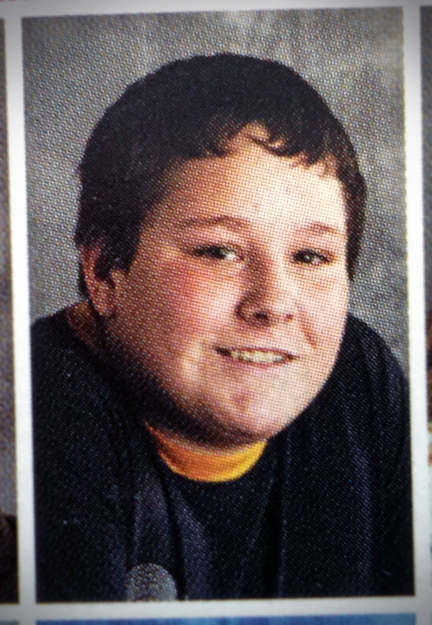The West Paris teen, reportedly mentally ill, made a threat with a rifle, the attorney general says.
The state trooper who gravely wounded a teenager in West Paris in June was legally justified in shooting him, the Maine Attorney General’s Office said in a report released Tuesday.
The report provides, for the first time, a detailed narrative of the encounter and the moments leading up to the shooting. It also reveals that Maine State Police were warned that 18-year-old James Reynolds had mental health disorders and was a danger to himself.
There was not enough time to bring crisis intervention specialists to the scene, said Stephen McCausland, spokesman for the state police. “There was a very condensed time” from the start of the incident to the end, he said.
The report says Trooper Jason Wing, on patrol in West Paris on the evening of June 8, was dispatched to investigate a report of a suspicious person along Roy Road, an unpaved private way in the rural Oxford County town.
A resident of Roy Road called police at 6:11 p.m. to report the presence of a suspicious person, known to the resident as “James,” who allegedly was responsible for a past residential burglary in the area.
About the same time, a mental health worker called police to inform them that a woman had reported that her son, James Reynolds, was missing. The caller said the teenager had mental health disorders, was a danger to himself and had attempted suicide in the past.
Wing, informed of the mental health concern, continued to search for the suspicious person, and determined where he believed the person was walking. While Wing made a telephone call to a game warden to arrange for a tracking dog, he saw someone looking at him from behind a wooden shed.
According to authorities, the person behind the shed, later identified as James L. Reynolds of West Paris, quickly disappeared behind the building and then reappeared with unidentified objects in both hands.
Wing gave commands for Reynolds to drop what was in his hands. Reynolds replied with a vulgarity – and showed a rifle held under his arm, the report says.
Wing drew his .45-caliber, state-issued semiautomatic pistol, took cover near his cruiser nearly 80 feet away, and told Reynolds to drop the rifle. Reynolds responded again, “(expletive) you!” and, according to the attorney general’s report, raised the rifle at Wing.
The trooper fired three rounds, hitting Reynolds each time.
The rifle, a lever-action .35-caliber hunting model, was later determined to have been missing from a nearby seasonal camp that had been burglarized. Although Reynolds was carrying ammunition for the rifle, the weapon was not loaded at the time of the encounter and had a locking mechanism on it, according to the report.
Reynolds suffered injuries that included bullet wounds to the head, leg and arm. He was treated at the scene by Wing and others, then taken by helicopter to Central Maine Medical Center in Lewiston. He has since been recovering from his injuries, according to his family, although his current condition is unknown. McCausland said authorities intend to charge him with burglary, gun theft and criminal threatening.
A resident of a seasonal home near the site of the shooting later reported that his home had been burglarized. Missing was the rifle found in Reynolds’ possession, along with other items, the Attorney General’s Office said.
Reynolds’ mother and attorney prevented law enforcement officers from interviewing the teenager, according to the report.
Reynolds’ attorney, Robert Laskoff of Lewiston, did not return calls Tuesday, and no more information was available on Reynolds’ mental condition.
“It is beyond the scope of this report and beyond the authority and expertise of the Attorney General’s Office to speculate on Mr. Reynolds’ motivations, his state of mind, or the medical or psychological underpinnings of his actions at the time he confronted Trooper Wing,” the report says.
Wing, who initially was put on administrative leave pending the investigation, returned to patrol in July. It was the second time he had used deadly force in the course of duty.
In June 2008, Wing fired three rifle shots into the windshield of an oncoming pickup truck driven by a fleeing suspect. No one was injured, the suspect was apprehended and Wing was later found justified in his use of deadly force.
As a matter of procedure in Maine, every use of deadly force by law enforcement is investigated by the Attorney General’s Office, which determines whether it is legally justifiable. Police officers may use deadly force only in situations in which they perceive an imminent threat against themselves or someone else, and actually and reasonably believe that deadly force is necessary to counter that threat.
The reviews do not ask whether violence could have been avoided, and every shooting by an officer since 2000 has been found to be justified.
Mental illness is a common factor in many police shootings, according to an analysis published in December by the Portland Press Herald/Maine Sunday Telegram.
From 2000 to the end of 2012, police in Maine fired their guns at 71 people, hitting 57 of them. Thirty-three of those people died.
The newspaper’s review of the 57 shootings showed that at least 24 of them, 42 percent, involved people with mental health problems. Of the 33 people who were killed, at least 19 of them, 58 percent, had mental health problems.
The newspaper also found that relatively few Maine police officers have advanced training to prevent or defuse the use of deadly force. It was unclear whether Wing was among those who had the training.
Matt Byrne can be contacted at 791-6303 or at: mbyrne@pressherald.com
Send questions/comments to the editors.





Success. Please wait for the page to reload. If the page does not reload within 5 seconds, please refresh the page.
Enter your email and password to access comments.
Hi, to comment on stories you must . This profile is in addition to your subscription and website login.
Already have a commenting profile? .
Invalid username/password.
Please check your email to confirm and complete your registration.
Only subscribers are eligible to post comments. Please subscribe or login first for digital access. Here’s why.
Use the form below to reset your password. When you've submitted your account email, we will send an email with a reset code.